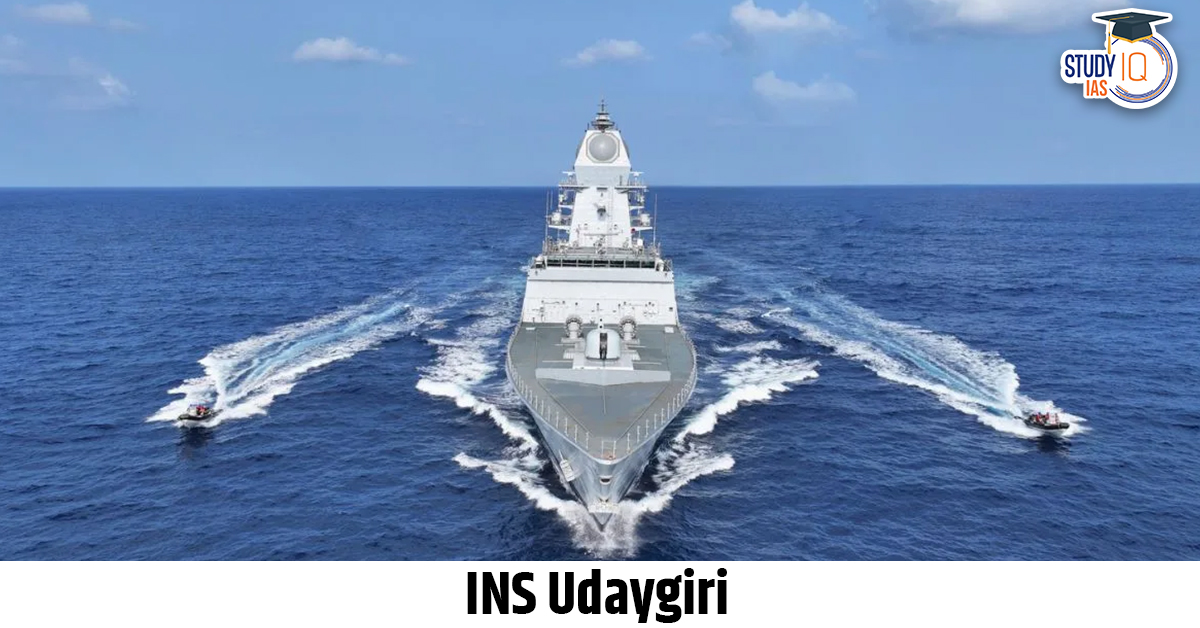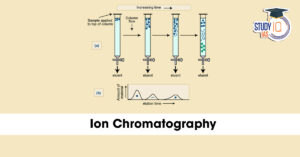Context: The Indian Navy simultaneously commissioned INS Udaygiri and INS Himgiri at Visakhapatnam. Both names revive earlier ships decommissioned in 2007 (Udaygiri) and 2005 (Himgiri).
Recently, Yard 12652, named Udaygiri, constructed by Mazagon Dock Shipbuilders Limited (MDSL), was officially handed over to the Indian Navy.
About INS Udaygiri
- Type: Nilgiri-class stealth guided-missile frigates.
Background & Construction
- INS Udaygiri (Yard 12652) is the second of seven frigates being built under Project 17A (P-17A).
- Constructed at Mazagon Dock Shipbuilders Limited (MDSL), Mumbai, and Garden Reach Shipbuilders & Engineers (GRSE), Kolkata.
Lineage
- Project 17A is the successor to the Shivalik-class (Project 17)
- The current INS Udaygiri revives the legacy of the erstwhile INS Udaygiri, a steam-powered ship decommissioned in 2007 after 31 years of service.
Capabilities
- Designed as multi-mission frigates, capable of operating in ‘Blue Water’ naval environments.
- Equipped to counter both conventional and unconventional threats, especially in India’s maritime zones.
Key Features of Project 17A Frigates
- Part of Project 17A (7 frigates planned: 4– Nilgiri, Udaygiri, Taragiri, and Mahendragiri by MDL, 3 –Himgiri, Dunagiri, and Vindhyagiri by GRSE).
- Design: Navy’s Warship Design Bureau.
- Propulsion: CODOG (Combined Diesel or Gas).
- Stealth: Smaller radar cross-section despite larger hull size.
- The hull design is 54% larger than that of the Shivalik-class (P-17).
- Enhanced stealth and sleekness, with advanced weapon and sensor suites.
- Uses Combined Diesel or Gas (CODOG) propulsion, including:
- Diesel engine + Gas turbine.
- Controllable Pitch Propeller (CPP).
- Integrated Platform Management System (IPMS) for automation and efficiency.
Weapons & Sensors
- Supersonic Surface-to-Surface missiles.
- Medium-Range Surface-to-Air Missile (MRSAM)
- 76 mm naval gun, plus 30 mm and 12.7 mm rapid-fire close-in weapon systems.
- Most weapon systems and sensors are sourced from indigenous manufacturers (OEMs).
- Surface-to-Air: Long-Range SAM (Barak 8).
- Surface-to-Surface: 8 BrahMos cruise missiles.
- Anti-Submarine: Torpedoes, Indigenous Rocket Launchers (IRL), sonar Humsa (NG)
- Guns: 127 mm main gun, 2 × AK-630 rapid-fire guns
- EW & Surveillance: Shakti EW Suite, Multi-mission surveillance radar, airborne early warning radar.
Strategic Significance
- Boosts self-reliance in defence manufacturing.
- Promotes economic development, employment, and growth of MSMEs and the naval industrial ecosystem in India.


 Advanced Air Defence Radars: Types, Comp...
Advanced Air Defence Radars: Types, Comp...
 Ion Chromatography, Working and Applicat...
Ion Chromatography, Working and Applicat...
 Broadly Neutralising Antibodies (bNAbs):...
Broadly Neutralising Antibodies (bNAbs):...

























